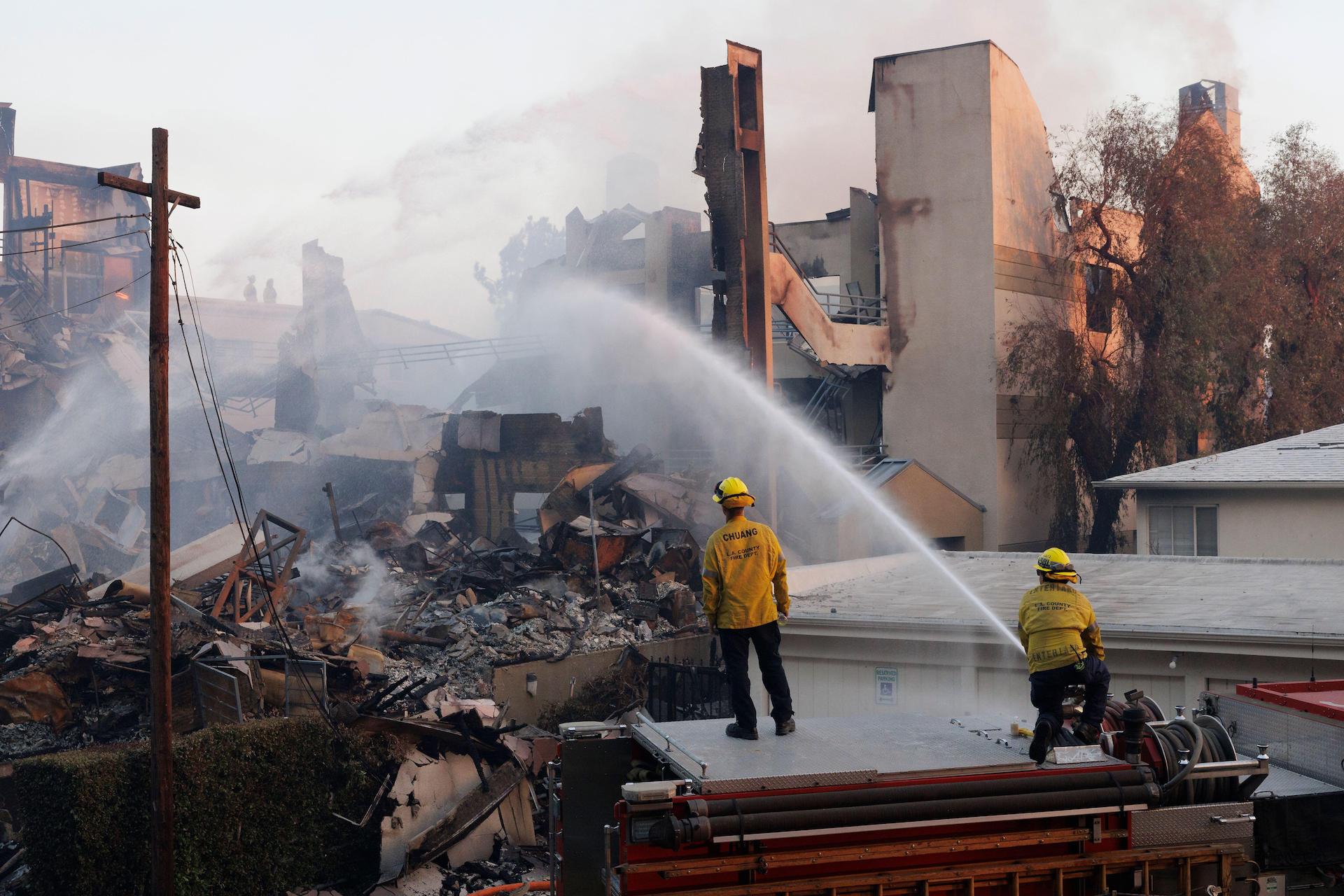 Caylo Seals/Sipa USA/Alamy Live News
Caylo Seals/Sipa USA/Alamy Live NewsState lawmakers and environmental advocates drafted a bill to prepare the state for migration, recognizing the Midwest as a climate haven for people evading climate disasters.
After wildfires erupted near Illinois State Sen. Graciela Guzmán’s extended family’s home in Los Angeles, the fear of the next wildfire lingered. Her family started talking about whether it was time to move to avoid the increasing risk of their homes burning down.
As climate-driven disasters become more frequent and severe, people in the U.S. and worldwide are asking themselves a similar question: Is it time to relocate to a more stable place to live?
Earlier this month, Gov. JB Pritzker signed new legislation, sponsored by Guzmán, requiring Illinois to create a climate displacement task force ahead of potential climate-driven in-migration.
News that puts power under the spotlight and communities at the center.
Sign up for our free newsletter and get updates twice a week.
Below, we explain climate displacement, the purpose of the task force, and why the bill was introduced now.
What is climate displacement?
Climate displacement occurs when people are forced to leave their homes due to climate disasters. These disasters can be sudden, like severe storms, or slower, like rising sea levels and persistent droughts.
The adverse effects of climate change are forcing some people to move worldwide. Most movement due to climate displacement happens within country borders rather than from one country to another, according to the Internal Displacement Monitoring Centre.
“We don’t have to look any further than, for example, the floods that just occurred in Texas,” said Guzmán. “We know these kinds of incidents happen, and it means that because of that, folks have to be able to call a new state a new home.”

In Puerto Rico, a string of devastating hurricanes over the last few years has driven families to relocate to mainland states after their homes and schools were destroyed. As sea levels rise and floods intensify, people in Louisiana are slowly retreating inland to live in areas perceived as less risky.
Although climate disasters are not the only factor forcing people to move away from their homes, climate scientists have found that climate change adds another layer of pressure on people to move within or outside country borders.
What’s the purpose of the new Climate Displacement Act in Illinois?
The purpose of the act, Guzmán said, is to ensure the state plans for how it can best prepare for domestic and international displacement driven by climate change impacts.
The new law establishes a task force of 17 members, including:
- members of the general assembly
- leaders of relevant state agencies
- academic experts
- representatives from immigrant rights, environmental justice, labor and essential services advocacy groups
The task force will study projected climate migration patterns in Illinois and develop strategies to ensure the city and state are prepared to welcome new residents, said Dany Robles, Illinois Environmental Council’s legislative relations director, who spearheaded the bill’s drafting with Guzmán.

Robles said some examples of recommendations the task force could make include measures to expand affordable housing and cross-collaboration between state agencies responding to an influx of climate migrants.
Who does this impact?
According to the Internal Displacement Monitoring Centre, more than 11 million people in the U.S. moved within country borders due to disasters — mostly hurricanes — in 2024, more than any other country in the world. Experts say tens of millions more Americans are expected to be displaced this century.
Moving based on environmental preferences is common practice.
“People gravitate towards places that have better environmental quality if they’re able to do so,” said Sabina Shaikh, director of the Committee on Environment, Geography and Urbanization at the University of Chicago.
However, more people may be forced to move, rather than relocate voluntarily. Research shows that impacts from climate change disproportionately impact low-income families, people of color and immigrant communities, making them more susceptible to forced displacement due to climate disasters.
Why is Illinois considering climate displacement?
The population of Illinois declined for years until 2023, but worsening lower water availability and hurricanes in other parts of the country — issues not as prevalent in the Midwest — could change that, said Shaihk.
Illinois’ location and natural assets position the state as a potential destination for climate migrants, said Robles. It can be seen as more resilient to climate change because of its freshwater availability and more temperate climate. It doesn’t see as many hurricanes or wildfires as other regions in the country, and it is also promoted as a “Welcoming State” to immigrants and other newcomers.
Other states, like Maine, have also started considering climate displacement in their state-wide plans to address climate change. Cities near the Great Lakes, like Buffalo, New York, and Madison, Wisconsin, are being advertised as climate havens.
However, Illinois faces its own climate issues. Flooding disasters and extreme heat have been on the rise in the last few years, disproportionately impacting lower-income communities and communities of color like those in Chicago’s South and West Sides. In early August, parts of the state experienced the worst air quality in the world due to wildfire smoke in Canada.

What’s next?
Housing affordability often keeps residents in areas with greater environmental burdens, said Shaikh. She hopes the task force will recommend ways to prevent people fleeing environmental disasters from relocating to another unstable area in Illinois and ensure that the state adapts without exacerbating existing environmental and socioeconomic disparities.
“We would want to make a high quality of life for newcomers: jobs, affordable housing, environmental conditions, and the social resources to deal with whatever is causing them to have to leave a certain place,” said Shaikh.
The task force will be required to compile research and recommendations regarding climate displacement and submit them to the Illinois General Assembly by June 30 next year.
Aydali Campa is a Report for America corps member and covers environmental justice and immigrant communities for Borderless Magazine. Send her an email at [email protected].

